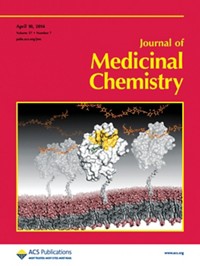Advertisement
Grab your lab coat. Let's get started
Welcome!
Welcome!
Create an account below to get 6 C&EN articles per month, receive newsletters and more - all free.
It seems this is your first time logging in online. Please enter the following information to continue.
As an ACS member you automatically get access to this site. All we need is few more details to create your reading experience.
Not you? Sign in with a different account.
Not you? Sign in with a different account.
ERROR 1
ERROR 1
ERROR 2
ERROR 2
ERROR 2
ERROR 2
ERROR 2
Password and Confirm password must match.
If you have an ACS member number, please enter it here so we can link this account to your membership. (optional)
ERROR 2
ACS values your privacy. By submitting your information, you are gaining access to C&EN and subscribing to our weekly newsletter. We use the information you provide to make your reading experience better, and we will never sell your data to third party members.
Synthesis
A Packed Issue
by Rudy M. Baum
September 1, 2014
| A version of this story appeared in
Volume 92, Issue 35
In every issue of C&EN, we try to provide readers with a unique package of information that will be of interest and use to them as chemical professionals. I believe we succeed most weeks. Some weeks, however, really stand out, and this week’s issue is one of those. It is packed with outstanding stories that illuminate the breadth and depth of the chemistry enterprise.
Start with the cover story by Senior Editor Bethany Halford. It’s a long story—15 columns. Readers have been clear with us in recent focus groups and surveys that they don’t have much patience these days with long stories, but this one is well worth your time. It details a 17-year interdisciplinary collaboration among a remarkable group of researchers at multiple institutions trying to understand the interaction of HIV with receptor molecules on immune system cells and develop small molecules that can block that interaction.
I’ll admit that I have a predisposition to find Halford’s story fascinating. I started covering the AIDS epidemic in the mid-1980s as C&EN’s West Coast bureau head and followed AIDS research closely for more than a decade. A few months ago, University of Pennsylvania chemistry professor Amos B. Smith III sent me an e-mail with two papers attached that he had coauthored. One paper in Accounts of Chemical Research (2014, DOI: 10.1021/ar4002735) has 10 coauthors, and one in the Journal of Virology (2014, DOI: 10.1128/jvi.00540-14) has 17.
The papers found their way to the always-capable Halford, who has interviewed many of the scientists involved in the research. Their effort started in the labs of Wayne A. Hendrickson, a structural biologist at Columbia University, and Joseph G. Sodroski, a virologist at the Harvard School of Public Health who has been involved in research on HIV since the 1980s. They were trying to understand in detail how the HIV envelope glycoprotein (gp120) bound to the CD4 antigen on immune system T cells susceptible to HIV infection.
Just getting a crystal structure of gp120 stripped of its sugar molecules bound to CD4 “was a several-year project,” Sodroski told Halford. Irwin Chaiken, now a biochemistry professor at Drexel University College of Medicine, recognized the potential for using the gp120-CD4 structure to investigate small molecules that might disrupt the interaction. Chaiken recruited Smith to the project in 2002; as Smith recalls, “They came to me because they needed chemistry on small molecules to address some of the things that were coming out of the project’s computational screening program.”
Halford recounts a fascinating story of scientific discovery, replete with ups and downs, surprising discoveries, and ultimately the discovery of molecules that do block the entry of HIV into CD4 T cells and appear to sensitize the virus to neutralization by easily elicited antibodies that, on their own, do not protect cells from HIV infection.
Just moving somewhat randomly through the issue, did you know that only 3% of the 1.8 billion cell phones that will be purchased in 2014 will be recycled and that Americans have more than 200 million old phones “hibernating” in their homes? In a Business Department story, Senior Editor Alex Scott reports on efforts worldwide to develop economical and environmentally sound methods to recycle phones.
Three stories in the issue are from the recent ACS national meeting in San Francisco. For example, Senior Editor Carmen Drahl reports on a symposium on orexin receptor antagonists, a new class of insomnia drugs, sponsored by the Division of Medicinal Chemistry. Unlike most sleeping pills, which act on γ-aminobutyric acid (GABA) receptors, this new class of compounds inhibits orexin receptors, which promote wakefulness when activated. Designing an effective orexin receptor antagonist and bringing it to market, however, is no small challenge, as Drahl’s story makes clear.
The issue also includes Assistant Managing Editor Sophie Rovner’s report on the annual ACS Comprehensive Salary & Employment Survey. The good news is that unemployment among ACS members is down to 2.9% from 3.5% last year and from 4.2% in 2012. The bad news is that chemists’ salaries are stuck at last year’s levels of $102,000 for Ph.D. chemists, $85,000 for those with a master’s degree, and $72,000 for bachelor’s degree chemists.
Thanks for reading.
Views expressed on this page are those of the author and not necessarily those of ACS.



Join the conversation
Contact the reporter
Submit a Letter to the Editor for publication
Engage with us on Twitter